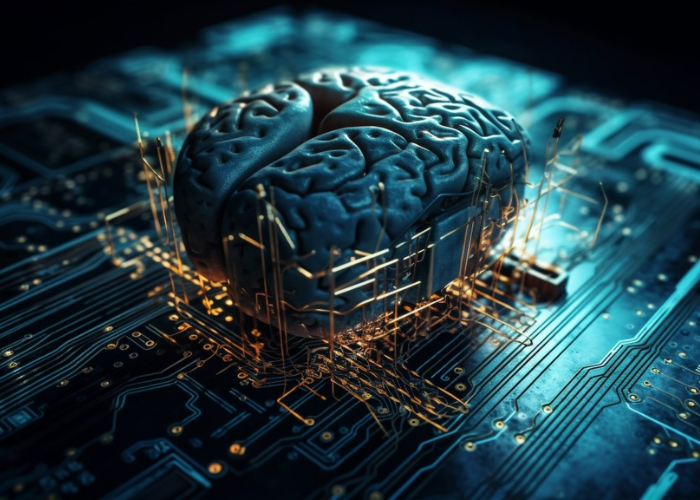In the rapidly evolving landscape of technology, the synergy between artificial intelligence (AI) and human creativity has led to groundbreaking innovations across various industries. One remarkable manifestation of this synergy is the emergence of “CodeCraft,” a paradigm that leverages AI-driven creativity to transform the way we approach coding, development, and problem-solving. This article explores the concept of CodeCraft, its implications, and the potential it holds for reshaping the future of software development.
The Confluence of AI and Creativity
Traditionally, creativity has been attributed to the human mind, while AI has been lauded for its analytical capabilities. However, recent advancements in AI, particularly in the field of deep learning and natural language processing, have propelled machines beyond their conventional roles. These developments have birthed a new era of AI that can simulate, mimic, and even enhance human creativity. CodeCraft stands as an exemplar of this transformation, embodying the fusion of AI’s computational power with the inventive faculties of the human mind.
Understanding CodeCraft
CodeCraft can be best described as the process of utilizing AI technologies to assist, augment, or even drive the creative aspects of software development. This encompasses a wide range of tasks, from generating code snippets to designing user interfaces, and even devising novel algorithms. At its core, CodeCraft seeks to streamline the development process, allowing programmers and developers to focus on higher-level concepts and problem-solving, while mundane and repetitive tasks are handled by AI systems.
AI-Powered Code Generation
One of the most compelling applications of CodeCraft is in the realm of code generation. Writing code is often a labor-intensive process that demands precision and adherence to syntax rules. AI-powered code generation tools can alleviate this burden by automatically generating code snippets based on high-level instructions provided by developers. This not only accelerates the development process but also reduces the likelihood of human errors.
Companies like GitHub have introduced tools like GitHub Copilot, which uses AI to suggest code snippets and even entire functions as developers type. This not only speeds up coding but also serves as a powerful learning tool for novice programmers, providing them with real-time examples and guidance.
Design and User Interface Generation
Beyond code, AI-driven creativity is making its mark in design and user interface (UI) generation. Designing aesthetically pleasing and user-friendly interfaces requires a combination of artistic sensibility and technical acumen. AI algorithms can now analyze design trends, user preferences, and existing interfaces to generate UI prototypes that align with human-centered design principles. Adobe’s Sensei, for instance, offers features that automate design tasks, such as image cropping and color palette suggestions.
Enhancing Problem-Solving
While CodeCraft’s applications are evident in code and design, its influence extends into problem-solving and decision-making. AI algorithms can analyze vast amounts of data to identify patterns, potential solutions, and insights that might elude human programmers. This can be particularly valuable in debugging complex systems or optimizing algorithms. By providing developers with data-driven insights, AI-driven creativity can lead to more informed and efficient decision-making.
Ethical and Creative Considerations
As CodeCraft blurs the lines between human and AI-driven creativity, ethical and creative considerations come to the forefront. The ethical implications of AI-generated content, including code, raise questions about attribution, ownership, and the role of human creators. Additionally, while AI can mimic creative processes, can it truly understand the nuances of human emotions, experiences, and cultural contexts that often underpin genuine creativity?
Critics argue that excessive reliance on AI for creative tasks might homogenize outputs and stifle the diversity that human creativity brings. Balancing the efficiency and innovation brought by AI with the uniqueness and depth of human creativity will be a paramount challenge for the future of CodeCraft.
The Future Landscape of Software Development
The trajectory of CodeCraft points towards a paradigm shift in the software development landscape. Routine tasks that consume a significant portion of developers’ time will be automated, allowing them to channel their cognitive resources towards ideation, innovation, and collaborative problem-solving. This could lead to the emergence of a new generation of programmers who possess a deeper understanding of the underlying principles, as well as an enhanced ability to collaborate across disciplines.
The potential for democratizing software development is also substantial. AI-powered tools can bridge the gap between experienced developers and newcomers, making coding more accessible to a wider range of individuals. The learning curve might be less steep, enabling enthusiasts from various backgrounds to contribute to the development process.
Challenges on the Horizon
Despite the promises, challenges lay on the horizon for the widespread adoption of CodeCraft. The technology is still in its nascent stages and requires refinement to fully comprehend the intricacies of various programming languages and development paradigms. Moreover, the ethical dilemmas of AI-generated content demand careful consideration to ensure that developers receive due credit and that the products remain ethically sound.
Cybersecurity is another concern. As AI is integrated more deeply into development processes, the potential attack vectors for malicious actors increase. Safeguarding AI-generated code and designs from vulnerabilities and ensuring the security of the systems they power will be essential.
Conclusion
CodeCraft is ushering in a new era of software development, one where human creativity and AI-driven ingenuity collaborate to reshape the way we build, design, and innovate. From expediting code generation to revolutionizing design processes, the potential of CodeCraft is vast. However, as we embrace this transformative technology, it’s crucial to strike a balance between harnessing AI’s power and preserving the authenticity of human creativity. The journey ahead will be a testament to our ability to navigate the evolving landscape of technology with responsibility, ingenuity, and a commitment to progress.
